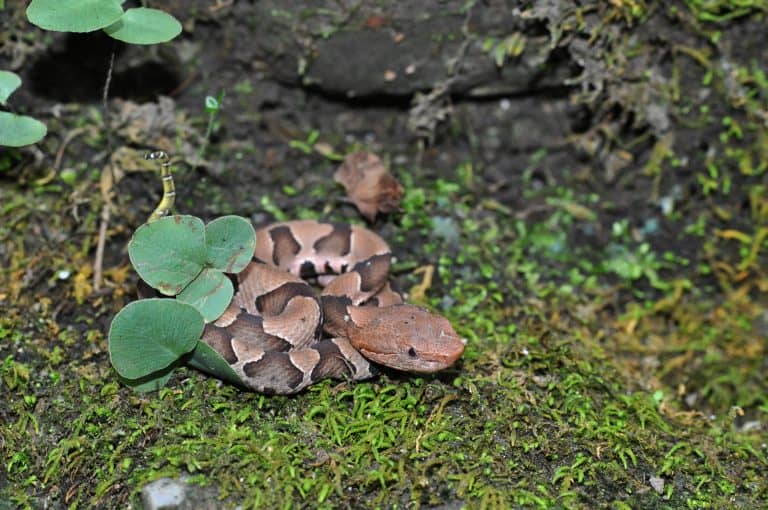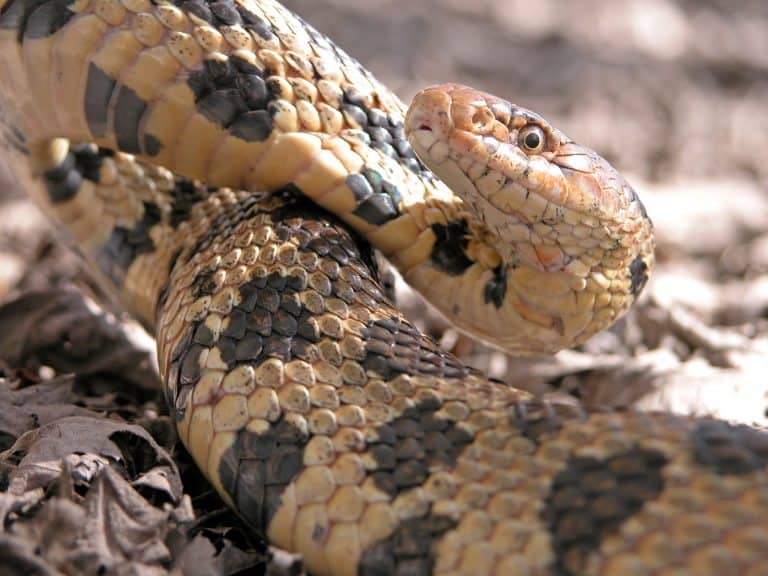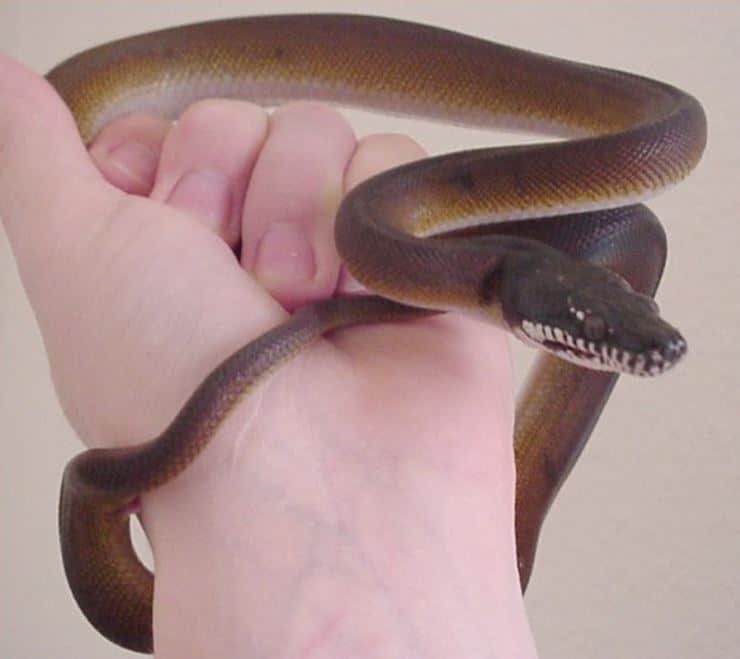🧠 Introduction
Have you ever been out in the yard or on a hike and spotted a small, oddly patterned snake? You pause and wonder, “Is that dangerous?” That tiny reptile might just be a baby copperhead—one of the most commonly encountered venomous snakes in the U.S.
Knowing how to identify a baby copperhead is essential, especially if you live in the Southeastern or Eastern parts of the country. These little snakes can pack a punch, and confusing them with harmless species could spell trouble. Let’s dive into the nitty-gritty and help you become a snake-spotting pro.
🐍 Overview of Copperhead Snakes
Copperheads (Agkistrodon contortrix) belong to the pit viper family, which includes rattlesnakes and cottonmouths. Known for their distinctive copper-colored heads (hence the name), these snakes are venomous but generally not aggressive unless provoked.
They’re medium-sized snakes, usually growing between 2 to 3 feet long as adults. Copperheads are nocturnal during hot months and can often be spotted during the day in spring and fall.
🌎 Habitat and Distribution
Copperheads are widespread in the United States, particularly in:
-
The Southeastern U.S.
-
The Eastern seaboard
-
Parts of the Midwest
They thrive in wooded areas, rocky outcrops, forest edges, and even suburban backyards. You’ll often find them near creeks, woodpiles, or leaf litter—basically, anywhere they can blend in and find prey.
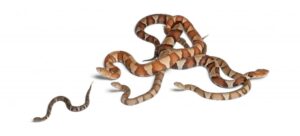
👶 Physical Appearance of Baby Copperheads
📏 Size and Shape
Baby copperheads are typically 7 to 10 inches long at birth. They’re slender and may look delicate, but don’t be fooled—these little guys are fully equipped with venom from day one.
🟠 Color and Patterns
One of the most striking features is their pattern:
-
Pale brown or tan base color
-
Dark, hourglass-shaped bands across the back
-
Belly is usually light and unmarked
The hourglass shapes are narrower at the top and wider on the sides, like a Hershey’s Kiss viewed from above.
🟡 The Tail Tip Tells All
One of the surest ways to identify a baby copperhead? Look at the tail.
Young copperheads have a neon yellow or greenish-yellow tail tip, which they wiggle to attract prey like frogs and lizards—a behavior called caudal luring. This feature fades as they mature, so it’s a solid indicator you’re looking at a juvenile.
🐱 Head and Eyes: The Signature Signs
🔺 Triangular Head
Copperheads have a distinct, wide triangular-shaped head that is much broader than the neck. This shape houses venom glands and is a classic pit viper trait.
👁 Pupils Like a Cat
Their eyes have vertical, slit-like pupils—similar to a cat’s. Most non-venomous snakes in North America have round pupils. But be careful—don’t get too close just to see!

🔄 Changes as They Grow
As copperheads grow, several features evolve:
-
The bright tail tip dulls
-
Patterns may become less vivid
-
Size increases significantly
-
They lose the “cute” factor and become more imposing
But remember, the hourglass pattern and triangular head remain consistent identifiers.
🧩 Common Look-Alikes
Confusing a harmless snake with a copperhead is easy if you don’t know the differences. Here are a few that often get mistaken:
🌊 Baby Water Snakes
-
Similar coloring
-
Flatten their heads when threatened
-
Round pupils (non-venomous)
-
No yellow tail tip
🐄 Eastern Milk Snakes
-
Mimic copperheads’ banding
-
Bright red blotches instead of brown
-
Checkerboard belly pattern
🌽 Corn Snakes
-
Vivid reddish-orange color
-
Smooth scales
-
Round pupils
🐾 Behavior and Movement
Baby copperheads aren’t aggressive but will defend themselves if threatened. They may:
-
Remain still and rely on camouflage
-
Vibrate their tails
-
Strike if stepped on or provoked
Despite the myths, they don’t go “looking for a fight.”
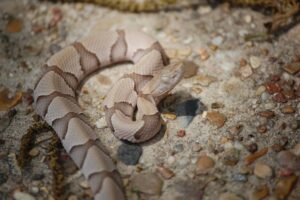
⚠️ Safety Tips If You Encounter One
If you see a baby copperhead:
-
Do not touch or try to move it
-
Back away slowly
-
Keep pets and kids away
-
Do not attempt to kill it—most bites happen during handling
Let nature take its course or call a pro.
🧪 Myth-Busting: Are Baby Copperheads More Dangerous?
Contrary to popular belief, baby copperheads are not more venomous than adults. The myth says they “can’t control their venom,” but there’s no solid evidence of this. Yes, their venom is potent, but no more so than a mature snake’s.
📞 When to Call a Professional
You should call a wildlife expert or pest control if:
-
The snake is near your home or inside
-
You’re unsure of the species
-
There are multiple sightings in your yard
Professionals can identify and relocate the snake safely.
🔚 Conclusion
Now that you know how to spot a baby copperhead, you’re better equipped to stay safe and smart when you’re outdoors. Look for that telltale yellow tail, hourglass patterns, and triangular head. And if you’re ever in doubt, it’s best to steer clear and call an expert.
Remember—respecting wildlife keeps everyone safe.
❓FAQs
1. Can a baby copperhead kill a human?
Unlikely. While the venom is potent, fatalities are extremely rare. Medical attention should still be sought immediately.
2. Do baby copperheads travel in groups?
No. They may be born in the same area, but copperheads are solitary from birth.
3. How long do baby copperheads keep their yellow tails?
Usually for the first year or until they grow past 12 inches. The color fades with age.
4. Are baby copperheads active during the day or night?
They are mostly nocturnal but can be active during the day in cooler months.
5. What do baby copperheads eat?
They eat insects, frogs, lizards, and small rodents—using that yellow tail to lure prey in.
